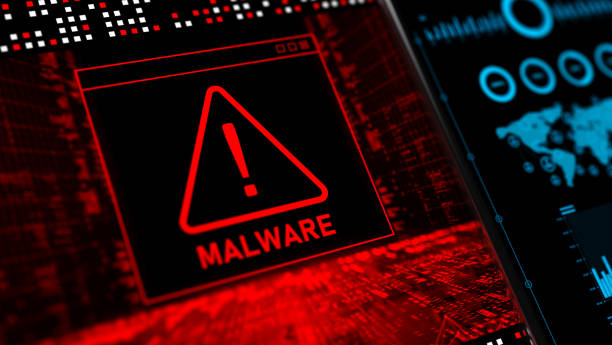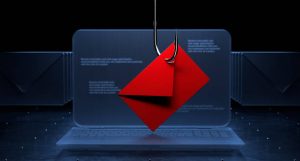Malware infections can disrupt your computer’s performance, compromise your sensitive information, and potentially lead to identity theft. Knowing what to do when you suspect that your computer has been infected can save you time, stress, and protect your personal data. This guide will provide a comprehensive set of actions to take immediately and explain how to clean and safeguard your system effectively.
Understanding Malware and Its Symptoms
What is Malware?
Malware, short for malicious software, is a program or file designed to disrupt, damage, or gain unauthorized access to computer systems. It includes various types like viruses, trojans, spyware, and ransomware, each with distinct characteristics and methods of attack. Understanding malware types can help you identify and address potential threats effectively.
Common Types of Malware (Viruses, Trojans, Spyware, etc.)
Some common types of malware include:
- Viruses: Infect legitimate files and spread across systems.
- Trojans: Disguise themselves as legitimate software but perform malicious actions.
- Spyware: Monitors user activity and steals sensitive information.
- Ransomware: Encrypts files and demands a ransom for access.
- Adware: Displays unwanted advertisements that can lead to more malware.
How Does Malware Enter Your System?
Malware can infiltrate your system through various channels:
- Phishing Emails: Links or attachments that download malware.
- Malicious Websites: Fake sites that trigger downloads.
- Infected Software: Programs or files from untrustworthy sources.
- USB Drives: Using infected external devices.
Recognizing the Signs of a Malware Infection
Common symptoms indicating a malware infection include:
- Slower performance and frequent crashes.
- Unusual pop-ups or ads.
- Unauthorized system changes.
- Unfamiliar programs running in the background.
- Redirections in your web browser.
Impact of Malware on Your Computer’s Performance
Infected systems may experience degraded performance, data loss, and unauthorized access to sensitive information. Over time, malware can render a computer nearly unusable if not addressed promptly.
Immediate Steps to Take When You Suspect Malware
Disconnect from the Internet
The first step is to disconnect your computer from the internet. This prevents malware from communicating with its command and control servers and spreading to other devices on the network.
Back Up Important Files Immediately
Before taking any drastic measures, back up your important files. Use an external drive or cloud service to ensure that your documents, photos, and other essential data are safe.
Identify Suspicious Programs and Processes
Open the Task Manager (Windows) or Activity Monitor (Mac) and look for any unfamiliar processes. This can help you pinpoint the malware. Research suspicious processes online if you’re unsure.
Use Safe Mode to Isolate the Problem
How to Enter Safe Mode (Windows & Mac)
Safe Mode starts your system with minimal drivers and services, allowing you to troubleshoot without interference from malware.
- Windows: Restart and press
F8orShift + F8during boot. - Mac: Hold the
Shiftkey during startup.
Running a Malware Scan in Safe Mode
Run a full malware scan using reputable antivirus software. Safe Mode minimizes the number of running processes, making it easier for antivirus tools to detect and eliminate infections.
Conduct a Thorough Malware Scan
Using Reputable Antivirus Software
Choose a well-known antivirus program like Bitdefender, Malwarebytes, or Kaspersky. Run a full system scan to detect and remove threats.
Free vs. Paid Malware Removal Tools
Free tools can offer basic protection, but premium versions provide real-time protection, advanced scanning, and automated updates, ensuring a higher level of security.
Choosing the Best Anti-Malware Software
Look for software with good reviews, regular updates, and features like ransomware protection and web filtering to guard against future threats.
Manual Removal of Malware
Deleting Malicious Files and Programs Manually
Identify malicious files in your program list or registry. Delete any suspicious programs that you didn’t install. Exercise caution to avoid deleting essential system files.
Registry Editor and File Explorer Techniques
Use the Windows Registry Editor (regedit) or File Explorer to locate and delete remnants of malware. Make a backup of the registry before making changes.
Risks Involved in Manual Removal
Manual removal requires precision. A mistake can cause system instability or further infections. Consider professional help if you’re unsure.
Restore Your System to a Previous State
Using System Restore on Windows
If malware has severely altered your system, use System Restore to revert your computer to a previous, uninfected state. This feature is accessible via the Control Panel.
Restoring a Mac Using Time Machine
Mac users can use Time Machine to restore their system. Select a backup from before the infection occurred to recover the system.
Reinstall Your Operating System if Necessary
When Should You Consider a Reinstallation?
If malware has deeply infected core files or repeatedly reappears, reinstalling your OS may be necessary to fully eliminate it.
Steps to Format and Reinstall Windows or macOS
For Windows, use a bootable USB drive. For Mac, restart in Recovery Mode (Command + R). Follow the on-screen instructions to erase the disk and reinstall the OS.
Reinstalling Programs and Restoring Files
After a fresh OS installation, reinstall essential programs and restore backed-up files. Verify each file for safety before transferring it back to your computer.
Post-Removal Best Practices
Updating Your Operating System and Software Regularly
Keeping your OS and software up-to-date patches vulnerabilities that malware exploits. Enable automatic updates wherever possible.
Enabling a Firewall for Enhanced Security
A firewall blocks unauthorized access to your system. Use both hardware and software firewalls for comprehensive protection.
Setting Up Real-Time Protection
Enable real-time scanning and monitoring features in your antivirus software to detect and block malware as it appears.
How to Protect Your Computer from Future Infections
Avoiding Suspicious Links and Downloads
Always be cautious when clicking on links in emails or downloading files. Use a reputable web filter to warn against malicious sites.
Using Strong Passwords and Two-Factor Authentication
Strong, unique passwords combined with 2FA can prevent unauthorized access, even if malware tries to steal your credentials.
Implementing Secure Browsing Practices
Use secure browsers, enable HTTPS, and consider browser extensions like uBlock Origin to block malicious scripts.
FAQs About Malware and Computer Security
Can malware infect mobile devices too?
Yes, mobile devices are also susceptible to malware. Use a security app to scan and protect your smartphone.
Is using a free antivirus enough?
Free antiviruses provide basic protection but may lack advanced features. Consider a paid option for comprehensive security.
What should I do if my computer keeps getting reinfected?
Repeated infections may indicate an undetected threat. Consider professional help or reinstall your OS to start fresh.
Are Mac computers immune to malware?
No, while Macs are less targeted, they can still be infected. Use antivirus software and follow safe practices.
How often should I scan my system?
Scan your system weekly and after any suspicious activity to ensure continued protection.
What are the best practices for safe online behavior?
Avoid downloading from untrusted sites, don’t open email attachments from unknown senders, and use strong, unique passwords.
Conclusion
Summary of Key Steps to Take
If you suspect malware, disconnect from the internet, back up your data, and run a thorough malware scan. Use Safe Mode, restore the system, or consider a complete reinstallation if necessary.
Final Thoughts on Preventing Malware Infections
Maintaining robust security practices and staying vigilant can protect your system from future infections.
If you suspect your device is severely infected and need expert assistance, call Techie Kumar for an extensive malware checkup and professional cleanup service.

